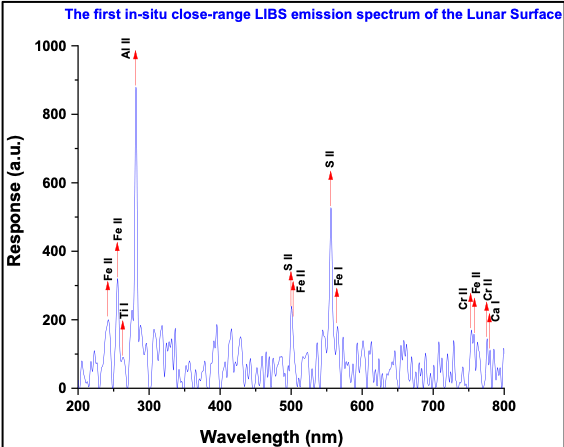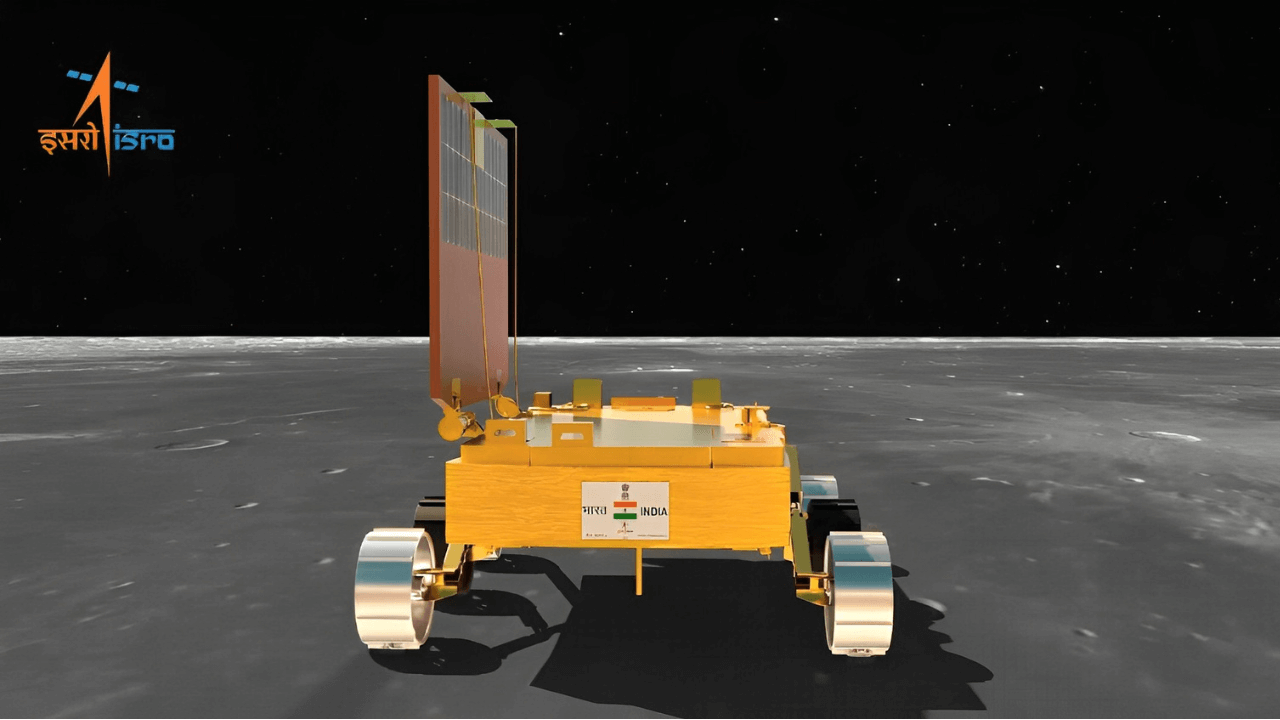The Chandrayaan-3 mission’s rover, Pragyan, has made a significant discovery on the lunar surface by detecting the presence of sulphur near the southern pole, as reported by the Indian Space Research Organisation (ISRO).
During its pioneering in-situ measurements to analyze the elemental composition of the lunar surface, the rover’s Laser-Induced Breakdown Spectroscopy (LIBS) instrument identified the presence of sulphur.
This discovery is particularly noteworthy because the in-situ measurements conducted by the rover directly confirm the existence of sulphur (S) in this region, a confirmation that was not attainable using the instruments on the orbiters.
Presence of Other Elements

In addition to sulphur, the LIBS instrument aboard the Chandrayaan-3 rover has identified the presence of various other elements on the lunar surface. These include aluminium (Al), calcium (Ca), iron (Fe), chromium (Cr), and titanium (Ti). Subsequent measurements have also confirmed the existence of manganese (Mn), silicon (Si), and oxygen (O) on the lunar surface.
The rover’s ongoing experiments are now focused on detecting the presence of hydrogen. This comprehensive analysis of elemental composition is a significant step in enhancing our understanding of the lunar surface and its unique characteristics.
Moon’s Soil Temperature
Laser-Induced Breakdown Spectroscopy (LIBS) is a scientific method used to analyze the composition of materials. This technique involves subjecting materials to intense laser pulses. The process begins with focusing a high-energy laser pulse onto the surface of the material, which could be a rock or soil sample. As a result of the laser pulse, an extremely hot and localized plasma is generated.
The light emitted by the plasma is then collected, and its spectrum is resolved and detected using instruments like Charge Coupled Devices (CCDs). Each element emits a distinct set of wavelengths of light when it is in a plasma state. By analyzing these emitted wavelengths, scientists can determine the elemental composition of the material being studied. This method allows for the identification of specific elements present in the material based on their unique spectral signatures.
Other Discoveries made by Pragyan Rover
Chandrayaan-3, India’s lunar exploration mission, has been making significant discoveries since its successful landing on the Moon on August 23. Along with identifying large craters in the southern polar region, the rover named Pragyan has also detected substantial temperature variations across the lunar surface.
- Through its study of the lunar topsoil, the rover’s ChaSTE (Chandra’s Surface Thermophysical Experiment) instrument has revealed temperature differences.
- On the Moon’s surface, temperatures were measured around 50 degrees Celsius, rising to over 60 degrees at a height of 20mm.
- At a depth of minus 80mm below the surface, the temperature plummeted to minus 10 degrees Celsius.
- ChaSTE is designed to analyze the temperature profile of the lunar topsoil near the pole, providing insights into the thermal behavior of the Moon’s surface.
- Equipped with a temperature probe featuring controlled penetration capabilities, the instrument can reach depths of up to 10 cm beneath the surface.
- This probe incorporates 10 individual temperature sensors, allowing for detailed temperature measurements and analysis.
About Chandrayaan-3
Chandrayaan-3 was launched on 14th July at 2:35 pm IST as scheduled, from Satish Dhawan Space Centre Second Launch Pad in Sriharikota, Andhra Pradesh. The spacecraft entered lunar orbit on 5 August 2023. The Rover named Pragyan successfully landed on the South Pole of the Moon on 23rd August.
- It serves as a continuation of the Chandrayaan-2 mission, aiming to showcase the capability of safely landing and roving on the lunar surface.
- The mission includes both a Lander and Rover configuration.
- The launch was carried out by the LVM3 (GSLV Mk III) rocket which placed the integrated module in an Elliptic Parking Orbit (EPO) of size ~170 x 36500 km.
- The propulsion module of Chandrayaan-3 will transport the Lander and Rover configuration to a lunar orbit of 100 kilometers.
- The Chandrayaan-3 mission has been allocated a budget of ₹615 crore.
- Weekly Current Affairs 2025 PDF For Bank, SSC, UPSC Exams
- Unsung Heroes of India: 10 Unknown Freedom Fighters You Should Know
- 26 December Current Affairs 2023 in English
- Daily Current Affairs 2025, Check Today’s Current Affairs
- April Month Current Affairs 2024, Download PDF
- June Month Current Affairs 2024, Download PDF

Hello, I’m Aditi, the creative mind behind the words at Oliveboard. As a content writer specializing in state-level exams, my mission is to unravel the complexities of exam information, ensuring aspiring candidates find clarity and confidence. Having walked the path of an aspirant myself, I bring a unique perspective to my work, crafting accessible content on Exam Notifications, Admit Cards, and Results.
At Oliveboard, I play a crucial role in empowering candidates throughout their exam journey. My dedication lies in making the seemingly daunting process not only understandable but also rewarding. Join me as I break down barriers in exam preparation, providing timely insights and valuable resources. Let’s navigate the path to success together, one well-informed step at a time.






